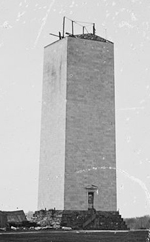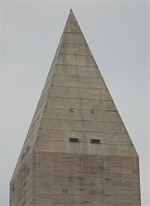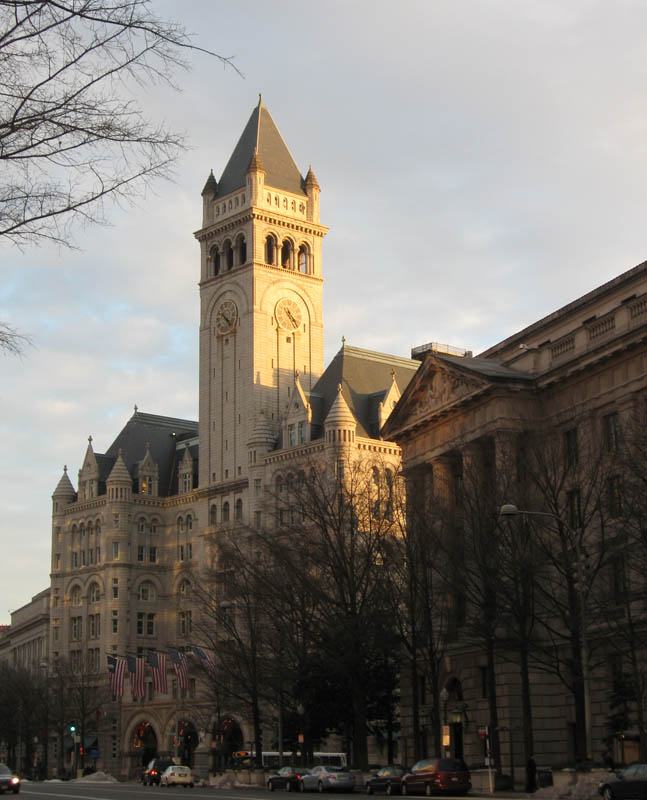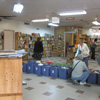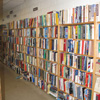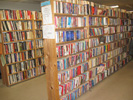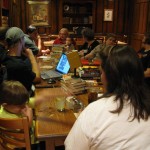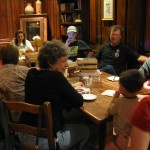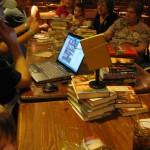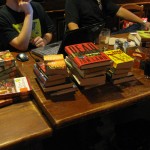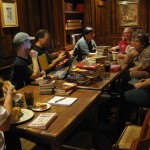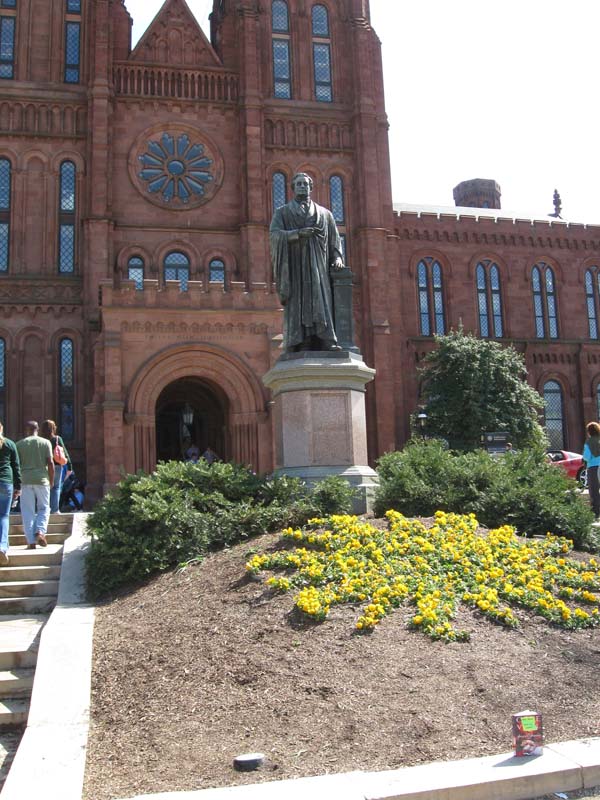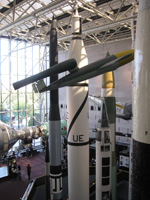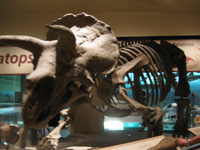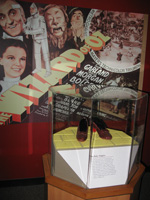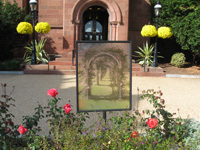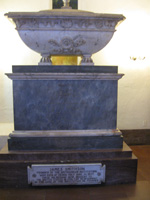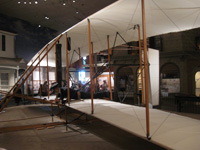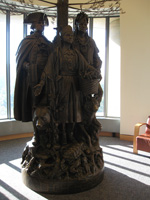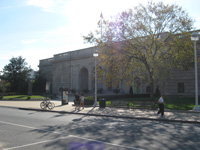Adventures at the Washington Monument
This post is part 3 of our Wednesday Adventure Series. Each week we will highlight something different in the Washington, D.C., Metro Area, many of which will be options for part of your own BookCrossing Journey. With so many things to see and do, how will you choose?
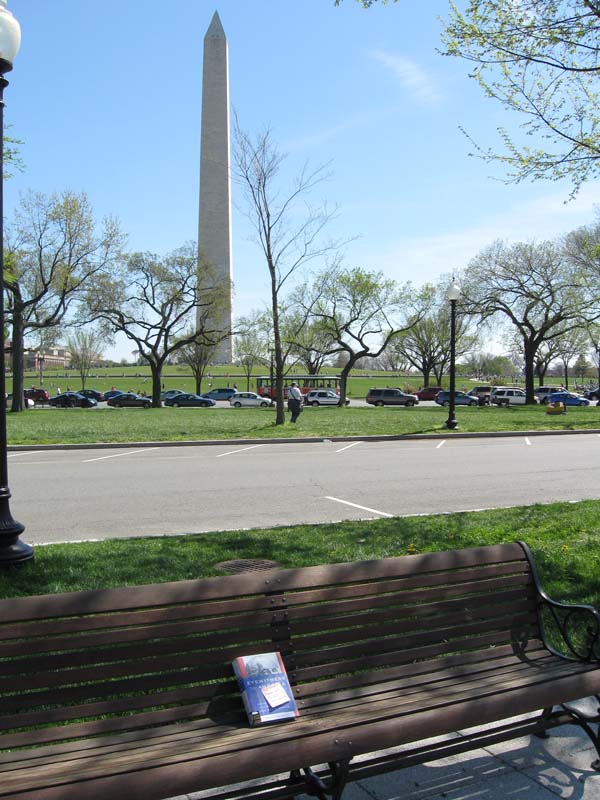 The Washington Monument is perhaps the most recognizable structure in all of Washington, D.C. It appears on many postcards and souvenirs, dominates the skyline, and is visited by over 670,000 people each year. At 555 feet 5.5 inches (169.294 meters) tall, it is the world’s tallest stone structure and the world’s tallest obelisk. You may have even seen it destroyed in films such as Mars Attacks or 2012.
The Washington Monument is perhaps the most recognizable structure in all of Washington, D.C. It appears on many postcards and souvenirs, dominates the skyline, and is visited by over 670,000 people each year. At 555 feet 5.5 inches (169.294 meters) tall, it is the world’s tallest stone structure and the world’s tallest obelisk. You may have even seen it destroyed in films such as Mars Attacks or 2012.
For all its modern fame, this monument to first US president George Washington almost wasn’t finished. Construction of the Monument began in 1848, but halted in 1854 due to political infighting and lack of funds. The nativist and anti-Catholic “Know-Nothing” Party took over the project in 1849, and though stones had been donated from numerous sources, one in particular caused quite a stir. The Know-Nothings objected to the block from Pope Pius IX and reportedly threw it into the Potomac. Congress rescinded further funding, and the missing “Pope Stone” was not replaced until 1983.
Though the Know-Nothings eventually gave up on the Monument, the Civil War and other funding issues kept construction on the Monument from continuing until 1876, after it had stood at less than one-third its proposed height for nearly two decades. You can still see a line about 150 feet up where the coloring of the stone changes.
The Monument was finally dedicated in 1885, when it was the tallest structure in the world. This title was short-lived, however, as it was bested by the Eiffel Tower by more than 500 feet in 1889. The 9-inch pyramid on the very tip of the capstone is made of solid aluminum, which was worth as much as silver in the 1880s. This tiny metal pyramid is nearly impossible to see from the ground, but one very visible addition near the top of the tower are flashing red lights to warn airplanes from flying too close.
Touring the Washington Monument is free, but tickets are required. Same-day tickets are issued on a first-come, first-served basis every morning starting at 8:30 AM. One person can reserve up to six tickets. If you reserve your ticket online ahead of time, there is a service fee of $1.50. Tours are available between 9:00 AM and 5:00 PM, with the last tour beginning before 4:45 PM. If you plan to visit, keep in mind that food, drink, large bags, and strollers are not allowed, and there is no public restroom on site.
For those who collect National Park Service passport stamps, the nearby Washington Monument Bookstore has about twenty.
Though a tour of the Washington Monument is not specifically part of the schedule for the 2011 BookCrossing Convention, there will be plenty of time if you would like to visit it on your own. Daunted by the crowds? Do what the locals do: visit the Clock Tower at the Old Post Office, located at the corner of 12th St NW and Pennsylvania Ave NW. Standing at 315 feet and offering a 360-degree view, the only taller structure in sight is the Washington Monument itself. Tours are free and almost never crowded. As an added bonus, the pavilion houses a wide variety of restaurants and gift shops.
Adventures at the Book Thing of Baltimore
This post is part 2 of our Wednesday Adventure Series. Each week we will highlight something different in the Washington, D.C., Metro Area, many of which will be options for part of your own BookCrossing Journey. With so many things to see and do, how will you choose?
 Have you ever dreamed of visiting a building full of absolutely free books just sitting there for the taking? That dream can become a reality when you visit the Book Thing of Baltimore, Inc. The mission of this nonprofit is to put unwanted books into the hands of those who want them. It’s basically a place where people donate books of various conditions (some are brand new, some are well-loved) and you’re welcome to help yourself to as many books as you like for free, though there is a daily limit of 150,000 per person. What’s the catch? There isn’t one! And the suggested donation is a smile. More information about the Book Thing can be found on their website.
Have you ever dreamed of visiting a building full of absolutely free books just sitting there for the taking? That dream can become a reality when you visit the Book Thing of Baltimore, Inc. The mission of this nonprofit is to put unwanted books into the hands of those who want them. It’s basically a place where people donate books of various conditions (some are brand new, some are well-loved) and you’re welcome to help yourself to as many books as you like for free, though there is a daily limit of 150,000 per person. What’s the catch? There isn’t one! And the suggested donation is a smile. More information about the Book Thing can be found on their website.
The place is divided by section (fiction, nonfiction, travel, history, biographies, children’s, romance, science fiction, mystery, science, animals, gay and lesbian literature, textbooks, philosophy, magazines, etc.) but apart from that, there’s no ordering system. One of our favorite sections is “Recommended by Russell,” a double-sided set of bookcases that contain owner Russell Wattenberg’s personal favorite, recommended books. The inventory of the Book Thing is based entirely on donations so it varies from day to day. Therefore, it’s tough to visit the Book Thing with a specific book in mind. However, it’s a great place to visit if you love being around books and browsing. Sometimes you stumble upon just the book you’re looking for; other times, you get great ideas for themed releases or gifts. Every book is stamped on the first page to let people know it’s a free book and cannot be resold.
The Book Thing opened its doors in 1999 as a way for people to get rid of books they no longer have use for and pass them on to new readers. Before it was a building, it was a box of books people could look through in the back of Russell’s car. Soon, people were giving him books for that “book thing…” he did, and the name stuck. Now he accepts donations from individuals, businesses, organizations, and libraries.
The Book Thing is open only on Saturdays and Sundays, but you’re in luck: we’re organizing a trip to it on the Sunday during our convention. Just sign up for this in the Add-Ons form to reserve your spot. The Book Thing can be impressive but it’s also small, so we might be limiting attendance and staggering our groups. We might even stop by several sites related to Edgar Allan Poe while we’re in Baltimore. Hundreds of free books are waiting for you; sign up today!
Meetup: La Madeleine, Bethesda
On October 9, BCinDC met in Bethesda, MD at La Madeleine to talk and swap books. It was wonderful catching up with each other.
We had a great showing with the following BookCrossers in attendance: crrcookie, KateKintail, lilgrovers, mdm139, melydia, MomOyster, nat4lee, ResQgeek, RockSolid, SqueakyChu, T-train
Adventures at the Smithsonian
This post is part 1 of our Wednesday Adventure Series. Each week we will highlight something different in the Washington, D.C., Metro Area, many of which will be options for part of your own BookCrossing Journey. With so many things to see and do, how will you choose?
James Smithson, a British scientist who died in 1829, stipulated in his will for his estate to go “to the United States of America, to found at Washington, under the name of the Smithsonian Institution, an establishment for the increase and diffusion of knowledge among men.†The reason for this generosity is something of a mystery as Smithson never set foot in the United States. Today, the Smithsonian Institution is the world’s largest museum complex, including 19 museums, 9 research centers, and the National Zoo. Many of the museums can be found on the National Mall in Washington, D.C. and are absolutely free to visit.
There is a wide variety of subject matter at these museums and you can get an introduction to all of them in the Smithsonian Institution Building, which everyone calls “the castle.” Contrary to what author James Patterson’s characters like to call it, locals don’t call it “the Smitty.”
The Smithsonian houses more than 136 million objects which have significance to nature, science, history, art, and culture. At the American History Museum you can see artifacts such as Lincoln’s top hat and Dorothy’s ruby slippers. Right next door at the Natural History Museum you can see everything from dinosaur skeletons to the Hope Diamond. You can learn about tribes of past and present at the American Indian Museum. Next to that museum you can see everything from moon rocks to the first airplane at the Air and Space Museum. The Smithsonian art galleries include the American Art Museum, the African Art Museum, the Hirshhorn Museum and Sculpture garden, the Freer Gallery, the Sackler Gallery, and the Portrait Gallery; treasures range from George Washington’s portrait in the Hall of Presidents to Roy Lichtenstein’s pop art. Also in Washington, D.C., but further away from the National Mall, are the Renwick Gallery, the Postal Museum, the Anacostia Community Museum, and the National Zoo.
Throughout Saturday at the BookCrossing Convention, we will have several Museum Hopper activities where you will get small tastes of most of the museums on the National Mall, created by BookCrossers for BookCrossers. We hope that after seeing some exciting highlights you’ll be able to decide which museums you would most like to see more of. The activity will end early enough for you to be able to spend a few hours in the museums on your own before closing time (5:30 PM).
Now here’s the inside scoop:
- If you plan to release books while visiting the Smithsonian museums, we strongly encourage you to do so outside on the Mall or in the Sculpture Garden. Book releases are not expressly forbidden inside the museums, but the cleaning staff is extremely vigilant about removing anything that doesn’t appear to belong in the exhibits.
- Most of the museums offer free highlight tours regularly (sometimes several times a day) so if you only have a few hours to spend, you might want to check those out.
- Most people coming to town (more than 7 million) seem to gravitate toward the Air and Space museum, which grew so large that the Smithsonian had to build a second Air and Space museum, the Udvar-Hazy Center, which is located in Virginia within sight of Dulles airport. The Air and Space Museum in Washington, D.C., can get crowded on the weekend so if you’re coming into town early or staying late, you might choose to save this museum for a weekday.
- Many of the museums have nice food courts, but the American Indian Museum food court is arguably one of the best in Washington, D.C., featuring foods from all over the United States as well as classic items.
- To save time when entering, have any bags/purses/backpacks unzipped and open. Security guards will give them a quick look to be sure you’re not carrying anything dangerous. More info about policies is available on the Smithsonian’s website.
- The National Gallery of Art and its sculpture garden sit amidst the museums on the National Mall but aren’t actually part of the Smithsonian Institution. The good news is that, like the Smithsonian museums, admission is free.
- The Smithsonian isn’t just about archiving. Some of the museums have research centers or libraries where you are allowed to look at things not currently on display in the museums. For example, there is a library on the third floor of the American Indian Museum where you can look at current research and view some of the archives. There is a Natural History Library (the NMNH Library) housing a collection of scholarly and technical research materials where you can find scientists studying and artists drawing. Contact the museums ahead of time for more information.
If you’re visiting the museums, be sure to bring good walking shoes. There are so many museums and so much to see. We guarantee you’ll find something that interests you.
Adventure Series
We can’t wait to tell you all about the many adventures the convention-planning committee members have in store for our BookCrossing friends during the 2011 Convention in Washington, D.C. But there’s way too much to share all at once, so we have created an Adventure Series of blog posts. Each Wednesday you will learn more about an activity, location, or other nifty aspect of the convention or location. Subscribe to our blog to get the posts sent directly to your e-mail or just check back here each week. With so many things to see and do in the Washington, D.C., area, how will you Choose Your Own BookCrossing Journey?
See the full list of blog posts in the series on the Adventure Series page.





